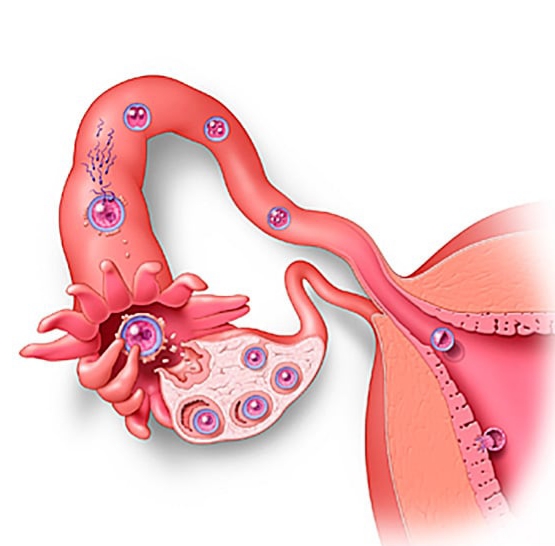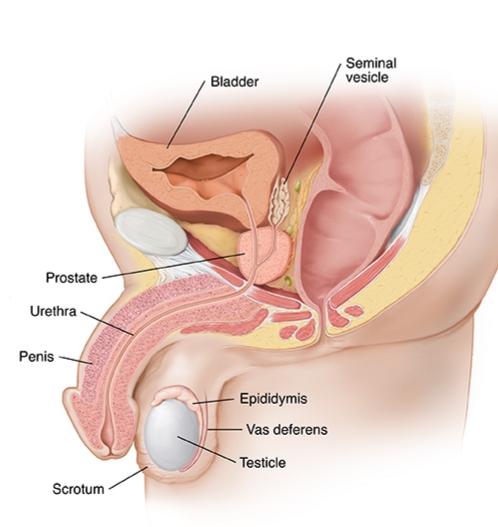Infertility is defined as the disease of the reproductive system defined by the failure to achieve a clinical pregnancy after 12 months or more of regular unprotected sexual intercourse (with no other reason such as breastfeeding or post partum amenorrhea)
There are types:
Primary infertility: this occurred in a couple who has never had a child.
Secondary infertility: failure to conceive following a previous pregnancy.

Currently female fertility peaks at age 24 and diminishes after the age of 30. Thus some may consider a woman infertile after the age of 35, having regular unprotected intercourse for six months without getting pregnant.
One shouldn’t wait too long on a woman with >35 years before investigating as the problem may get worse.
Most couple app 85% will achieve pregnancy within one year of trying.
About 92% will be pregnant within the 2nd year.
AFFECTED POPULACE.
20-30% of infertility are due to male factors.
20-35% : female factor
25-40%: Combined male and female factor.
10-20% : No cause was found.
I’m sure most of us have someone who is suffering from this either a brother, sister, cousin or a friend.
1; Females with infrequent menstrual periods: most females menstruate within 21-35 days with Ovulation occurring 2 weeks before the next period. Thus, if a woman’s cycle is more than 35 days, meaning she’s not releasing an egg as predicted. Evaluation of this irregular menses should be done.
2; Female age of 35 years and above: we talked about fertility peak period which is around 24-30 years. Egg number, quality and the chance of being normal decrease at a rapid rate after the age of 30.
3; Hx of PID/ STDs. Inflammation and permanent scarring of the Fallopian tubes can occur while being infected. Tubes must be patent for sperm to be able to traverse through and facilitate the eggs.
4; Uterine fibroid and endometrial polyp: presence of these two can lead to lower implantation and pregnancy rates.
5; Known male factor semen abnormalities: if a male partner has a hx of infertility with a prior partner or if there are abnormalities on his semen analysis, earlier fertility evaluation is advised, this should be done within 6 months of attempting pregnancy.

EFFECTS OF INFERTILITY.
Psychological: consequences of being infertile are many;
Distress,
The more anxious partners become to be pregnant, the more it may increase their sexual dysfunction. The state of mind of infertile couples are important. If the balance is disrupted, fertility is delayed.
Marital discord: due to pressure from families and friends.
Social consequences:
There are some degree of rejection which may lead to anxiety and disappointment.
Common causes of Infertility.
1- Advancing maternal age. This is the most common cause of infertility:
We mentioned qualities, number and an egg being normal reduces with age.
2- Ovulation disorders:
The release of a mature egg is important for fertility. Ovulation can be monitored by keeping a calendar.
Some women suffer from PCOs; having signaling problem in the brain and ovarian suffieciency( infrequent or irregular cycles).
3- Tubal blockage: due to infections>>scarring>>>blockage. Resultant effect, the egg wil not be fertilised by sperm as sperm can’t reach it, or the fertilised egg is unable to travel to the uterus.
4- Fibroid; Submucosal type of fibroid reduces fertility rate. This type project into the uterine cavity and removal of it has increased rate of fertility.
5- Endometrial polyps: Finger-like growth in the uterine cavity arising from the lining of the uterus. They also reduce fertility rate by 50%. Removal of polyp.
6- Male factor: it contributes to about 15-20% of cases of Infertility.
Semen analysis needs to be done, if found abnormal, it needs to be repeated for confirmation.
Those affected are referred to reproductive urologist: they are given treatment in the form of changing certain life style, hormonal treatment, surgery.
7- Endometriosis: cells similar to that of the uterine lining are found outside the uterus. It causes Infertility by producing inflammation and scarring. It can only be conformed by surgery.
8- Unexplained cause: after full evaluation is done for some a cause may not be found.
Fertility Evaluation:
Hx and Physical exam: including menstrual Hx, years of marriage, proline surgeries, prior pregnancy, regularity of menses. Family history and medical problems.
USS: to determine structure of Uterus, tubes and ovaries. Fibroid, polyp, cysts can be detected.
Lab testing: hormone analysis: FSH, LH, Estradiol, TSH, prolactin
HSG: to determine if a tube is blocked or not: patency of the tube/ scarring of the uterine cavity.
Semen analysis
Four parameters are analysed;
The volume: about 1.5 – 2ml (if less it could be due to structural or hormonal deficiency)
Sperm concentration: 20m sperm/1ml of semen.
<< if low, lower chance of conception
Sperm motility: about 50% of it should be motile
<< 50% motility: it may affect the ability of the sperm to fertilised an egg.
Sperm morphology: this is the shape of the sperm: the sperm has a head, midpiece and a tail if any is deficient or doubled it will affect the fertility.
A minimum of 5-15% normal forms helps give a better result:
Treatment options
1- Education: they are to be educated regarding normal process of fertility , problems associated with infertility and treatment option. If they understand it well, they will know when to seek help and the best treatment option for them.
Some couples get it all wrong and always missing the fertility window.
2- Medications: this is used to help in egg maturity and Ovulation, because without those no pregnancy.
There is a pill ( which help in the ovary to release egg)
Then an injection: help the egg to be matured.
3- Insemination: sperm is washed and prepared to be injected into the uterine cavity bypassing the cervix and bringing a motile sperm closer to the egg.
4- IVF: I’m sure everybody knows what this is. Though expensive, it’s a way of fertilising the egg by the sperm outside the body
5- Third party reproductions
6- Surgery
Dr Habeebah Abubakre













